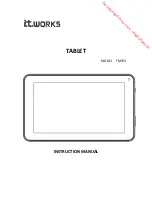10
En
glish
-
Using the wireless adapter in any other environment where the risk of
interference with other devices or services is perceived or identified as being
harmful.
If you are uncertain of the policy that applies to the use of wireless adapters in a
specific organization or environment (an airport, for example), you are
encouraged to ask for authorization to use the adapter before you turn it on.
USA—FCC and FAA
The FCC with its action in ET Docket 96-8 has adopted a safety standard for
human exposure to radio frequency(RF) electromagnetic energy emitted by FCC
certified equipment. The wireless adapter meets the Human Exposurelimits found
in OET Bulletin 65, supplement C, 2001, and ANSI/IEEE C95.1, 1992. Proper
operation of this radioaccording to the instructions found in this manual will result
in exposure substantially below the FCC’srecommended limits.
The following safety precautions should be observed:
-
Do not touch or move antenna while the unit is transmitting or receiving.
-
Do not hold any component containing the radio such that the antenna is very
close or touching anyexposed parts of the body, especially the face or eyes,
while transmitting.
-
Do not operate the radio or attempt to transmit data unless the antenna is
connected; this behavior maycause damage to the radio.
Use in specific environments:
-
The use of wireless adapters in hazardous locations is limited by the
constraints posed by the safetydirectors of such environments.
-
The use of wireless adapters on airplanes is governed by the Federal Aviation
Administration (FAA).
-
The use of wireless adapters in hospitals is restricted to the limits set forth by
each hospital.
The product comply with the FCC portable RF exposure limit set forth for an
uncontrolled environment and are safe for intended operation as described in this
manual. The further RF exposure reduction can be achieved if the product can be


















